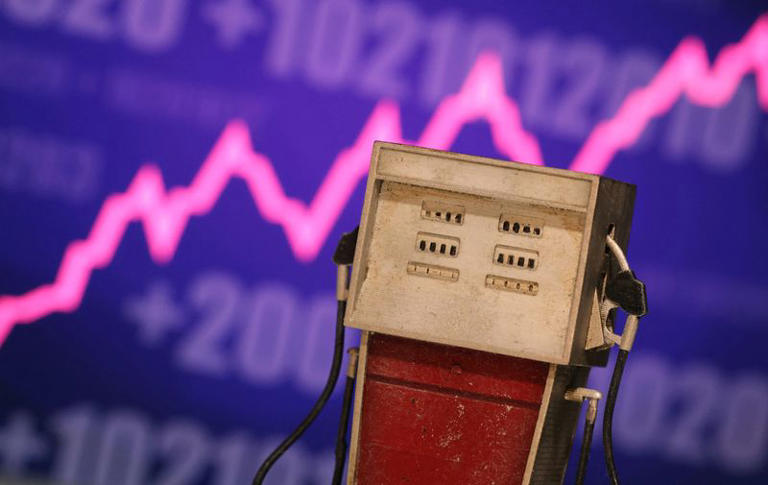Oil prices saw an early uptick on Thursday, driven by robust demand in the United States. Gasoline inventories hitting a three-month low and an unexpected drop in crude stockpiles contributed to the bullish sentiment. Geopolitical tensions remained heightened following Ukrainian attacks on Russian refineries, adding to supply concerns.
In early trading, Brent futures for May edged up by 11 cents, or 0.13%, reaching $84.14 per barrel at 0652 GMT. Similarly, April U.S. West Texas Intermediate (WTI) crude rose by 10 cents, or 0.13%, to $79.82 per barrel. The previous day, both contracts had surged approximately 3%, reaching a four-month high, fueled by an optimistic U.S. demand outlook and escalating geopolitical risks.
ANZ analysts highlighted the role of robust U.S. product exports in driving gasoline stocks to a three-month low. Additionally, the rise in gasoline prices provided support for refiners’ crack spread. Market sentiment also reacted to heightened geopolitical risks following a Ukrainian drone attack on a Russian refinery.
According to the Energy Information Administration (EIA), U.S. gasoline inventories recorded their sixth consecutive weekly decline, plummeting by 5.7 million barrels to 234.1 million barrels. This drawdown was three times higher than the expected 1.9 million-barrel decrease. Notably, stocks of motor fuel at the U.S. Gulf Coast hit their lowest levels since November 2022. Meanwhile, finished motor gasoline supplied, serving as a proxy for demand, saw a modest increase of 30,000 barrels per day, surpassing 9 million bpd for the first time this year.
U.S. crude oil inventories registered an unexpected decline, buoyed by increased processing activities. Adding to the supportive demand dynamics, the United States procured approximately 3.25 million barrels of oil for delivery to its Strategic Petroleum Reserve in August.
On the supply side, Ukrainian drone strikes targeting Russian refining facilities persisted for a second consecutive day on Wednesday. These attacks culminated in a fire at Rosneft’s largest refinery, marking one of the most significant assaults on Russia’s energy sector in recent memory.
“The recent uptick in oil prices has primarily been driven by tightening supply-side factors. With the Federal Open Market Committee (FOMC) meeting outcome scheduled for March 20, there may be a period of consolidation within the $80.55 to $81.65 per barrel resistance zone for WTI crude,” commented Kelvin Wong, Senior Market Analyst at OANDA.
In Ryazan, a drone strike ignited a blaze at Rosneft’s refinery, prompting the shutdown of two primary oil refining units, according to sources familiar with the situation who spoke with Reuters. This development underscores the significant disruptions caused by the ongoing geopolitical tensions in the region.
